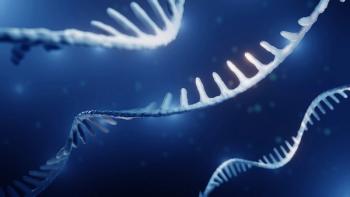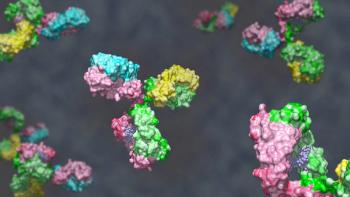
- BioPharm International-11-01-2018
- Volume 31
- Issue 11
Media Requirements for Different Cell Sources
This article will explore the requirements for media and supplements needed to maintain newer cell lines, such as those based on human cells and fungal cells.
Although Chinese hamster ovary (CHO) cells arethe standard in antibody-based drug production, there are limits to their use (1). Market pressures to develop more affordable biologic drugs quickly are also driving the need for optimizing and/or updating current methods of protein expression. Innovations in cell bank sources are attempting to address the needs in biopharma manufacturing for which a CHO cell line may be insufficient.
In an interview with BioPharm International, Nicole Faust, CEO and chief scientific officer of Cevec Pharmaceuticals, and Mark Emalfarb, CEO of Dyadic International, spoke about the cell-line innovations their respective companies have taken on to bridge that gap in biopharmaceutical manufacturing. Cevec is using a human cell-based expression system, and Dyadic uses a fungus, Myceliophthora thermophila, nicknamed C1, expression system that it has been developing for decades.
Different from CHO
BioPharm:What about your innovative cell line source differentiates it from the industry standard CHO cells?
Faust (Cevec):In contrast to the Chinese hamster ovaryderived cells, our Cevec amniocyte production (CAP) cell lines are of human origin. This has several advantages when producing recombinant proteins: the cells only add human post-translational modifications, thus avoiding any immunogenic structures, like non-human sugar structures attached to the protein. Moreover, any residual host cell proteins in the recombinantly produced product will be of human origin. The presence of non-human host cell proteins is a concern, in particular since there have been some cases (e.g., CHO derived blood coagulation factor IX) in which residual CHO host cell proteins have caused an immune response in the recipient.
A second differentiation criterion to CHO cells is the ability to produce complex glycosylated recombinant proteins. While the CHO-platform has been continuously optimized for the production of antibodies, CAP cells are particularly well-suited to express more complex proteins, such as, for example, blood coagulation factors or high molecular weight molecules. We have further engineered the CAP-Go platform to generate specific cell lines allowing the production of glycoproteins with tailor-made glycosylation patterns.
Emalfarb (Dyadic):CHO cells have a 20-hour doubling time, whereas our Eukaryota-engineered C1 cell line has a doubling time of only two hours, two times to 10 times higher productivity, and a production cycle of one-third to one-half the fermentation time with one-tenth the media cost compared to CHO. In addition, with our cell line, there is no need for viral inactivation. C1 is a better cell line than CHO because it is a natural enzyme (protein) producer that is more stable and can tolerate a wide range of growth conditions. In addition, C1 can express, secrete, and produce proteins such as antibodies at high levels (i.e., 2.4 grams per liter per day) and can easily grow in fermenters. In addition, C1 has a more stable genome than CHO since it is smaller and is haploidic. Therefore, it inherently has the potential benefits for becoming a successful protein production platform for biologics. In comparison, the CHO cell line was developed for many years before it became suitable as an industrial production platform.
Biopharm:How and why did you choose this source from which to develop a technology platform to produce biotherapeutics?
Emalfarb (Dyadic):Fungi in general, and C1 in particular, have a natural efficient system for protein expression. C1 however, also has the following benefits:
- Growth rate as fast as yeast
- Low viscosity, since the morphology was changed to propagules
- High productivity that was generated by random mutagenesis and direct genetic manipulation
- Efficient secretory system
- Wide range of fermentation conditions
- Grows on simple defined media on various carbon sources
- Can tolerant high glucose concentration
- Easy scale up (was scaled up and used commercially to produce enzymes at greater than 100m3)
Faust (Cevec):When developing the CAP platform, we were pursuing two goals: establishing a cell line from human origin that was not derived from tumors or from aborted embryos like the then-existing human cell lines and ensuring that the cells’ histories were carefully documented. For this reason, we chose amniocytes (i.e., fetal cells obtained for prenatal diagnostics) as the primary source of cells. They were immortalized using defined DNA segments of the Ad5 genome, and every single step of generating the cell lines was documented in detail. Thus, the full history of the cell line is known as are all materials the cells have been in contact with. All this is included in a biologics master file deposited with FDA, which our clients can reference.
Media/supplement optimization
BioPharm:What are the media and/or supplement requirements for growing and maintaining the population of these cells? Do these requirements differ from that used to grow and maintain CHO cells?
Faust (Cevec):The cells grow as single-cell suspensions to very high cell densities in serum-free, chemically defined media. The cells’ requirementsare very similar to other suspension cell lines growing in serum-free cultures. For optimal process yields, fine-tuning and adjustment to the specific metabolic needs of the CAP cells are beneficial.
One remarkable feature of the CAP cells is that they are robust in their growth behavior. For example, changes in media composition do not appear to result in changes to the pattern of post-translational modifications.
Emalfarb (Dyadic):This is a complete synthetic and defined media that is based on glucose as carbon source, salts to provide macro- and micro elements, with a few free amino acids to supply organic nitrogen. It is very simple, robust, and low-cost media. Not many other organisms can grow and produce so well on such simple media.
The control of the fermentation is also robust, based on a simple fed-batch strategy, requiring just control standard variables such as pH, dissolved oxygen, or foaming, which ensure scalability and provide versatility to the bio-manufacturing process.Additionally, the system is energy efficient and requires only little oxygen.
BioPharm:Is there a need for newer/innovative media and supplements in the market for emerging cell sources, such as yours?
Emalfarb (Dyadic):Since we are using simple defined already low-cost media that is based on glucose, we don’t think that there is a need for newer/innovative media and supplements in the market.
Faust (Cevec):For producer cell lines like CHO or CAP-Go, there are already excellent media available. However, when you produce very diverse products like we do with the CAP-Go platform, ranging from small growth factors to highly complex multimeric proteins, it becomes apparent that the optimal media/supplement composition depends very strongly on the particular product.
With a growing number of complex recombinant proteins being manufactured, it would be very desirable to have ‘media optimization kits’ to be used to establish the optimal media composition during process development with the option to then obtain exactly this composition in GMP quality from the media manufacturer.
Reference
1. F. Mirasol, Pharmaceutical Technology 42 (8) 16–19 (2018).
Article Details
BioPharm International
Vol. 31, Number 11
November 2018
Pages: 18–19
Citation
When referring to this article, please cite as F. Mirasol, “Media Requirements for Different Cell Sources,” BioPharm International 31 (11) 2018.
Articles in this issue
about 7 years ago
New Equipment Advances Biopharmaceutical Operationsabout 7 years ago
Innovation and Industry Strength Recognized at CPhIabout 7 years ago
Scaling Up Novel Therapiesabout 7 years ago
User Requirements Specifications–How Difficult Can It Be?about 7 years ago
The Criticality of Manufacturing Dataabout 7 years ago
Single-Use Bioprocessing Equipment Trends and Adoption by CMOsabout 7 years ago
Using Multiple Techniques in Biosimilar Analysisabout 7 years ago
Innovations in Prefilled Syringes for Biologic DrugsNewsletter
Stay at the forefront of biopharmaceutical innovation—subscribe to BioPharm International for expert insights on drug development, manufacturing, compliance, and more.




